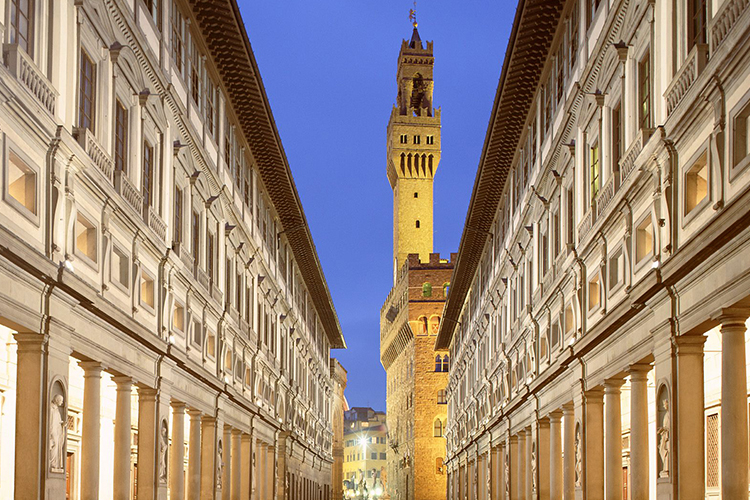Kept in the middle of the wonderful Natural Park of the Apuan Alps, it is among the most beautiful and complete caves in all of Europe: it is the Grotta del Vento, favorite destination for all those who love hiking and diving in nature.
The rocky complex is complete from a morphological and evolutionary point of view and allows visitors to follow its routes to observe closely every single aspect of fossil vadose tunnels, phreatic ducts and environments totally submerged by water. All this, surrounded by limestone formations of any kind, bright and bright colors.

Fonte: fai-platform.imgix.net
Among all the caves in Italy, the Grotta del vento is the only one that allows visitors to choose between the three different underground itineraries and among the few to be open every day of the year (except December 25), even when it rains or snows. In addition, it is accessible to anyone: singles, couples, families with children, school groups and groups of friends.
Origin of the name
Anyone who visits the cave in summer is amazed by the strong wind that comes from the bowels of the mountain; this should not cause concern because, once the armored door is closed, the current of air stops, as well as the feeling of cold.
In the innermost parts the temperature is around 10.7 C for the whole year and you can access through two entrances: the lower one, the tourist entrance that opens at 642 meters above sea level, and the upper one, which is at 1400 meters above sea level.
Consequently, if both entrances are open, a column of air is formed about 800 meters high, which during the summer, being colder and heavier than the outside air, precipitates downwards causing a strong wind at the lower entrance, while hot air is sucked into the upper inlet. In winter, however, the opposite happens.
The wind speed is directly proportional to the temperature difference between indoor and outdoor; if the two temperatures are equal, then any air current ceases. For this, his name is Grotta del Vento.
The old miners’ refrigerator
The lower entrance, the tourist one, is near Fornovolasco and very close to the village of Trimpello which, during the domination of the Este family, was inhabited by miners who extracted iron from the nearby deposits of magnetite. Probably the village was born because of its proximity with a small spring nearby and with the cave from which, already then, a strong icy wind was blowing.

Fonte: visittuscany.com
The miners, who did not know what the wind was caused by, accepted it as a “gift of divine providence” and used it to keep their food cool. In short, for them the cave was a kind of refrigerator.
The discovery of the cave
The real discovery of the Grotta del Vento dates back to 1898 when some young people of Fornovolasco, intrigued by that strange air current, convinced a 4 year old girl to slip into the crack (too narrow to be passed by an adult). The little girl, after a few meters, let her friends know that the initial narrow was widening; as a result, the young people equipped with shovels and picks enlarged the crack and advanced up to what is now known as the Bear Room.
At this point, however, they probably stopped because of the beliefs of the time, according to which the cave was populated by monsters and demons. They went back, but they started a series of explorations that led the Cave of the Wind to be, today, destination of over 50 thousand people every year.
The paths in the cave
The Grotta del Vento includes 3 distinct and separate paths, each with its own characteristics. All have in common the non-slip concrete bottom, metal railings and artificial lighting, so they are accessible to everyone. Here they are in detail:
- Route 1: you can admire a beautiful crystal lake surrounded by limestone formations such as stalactites, stalagmites and flows. The steps alternate with flat parts, so the path is not tiring and suitable for even the smallest;
- Route 2: includes route 1, at the end of which begins the descent of the Abyss of the Giants which, in turn, leads to the Hall of Voices. Limestone formations give way to large forms of erosion and a small stream. The itinerary is not recommended for those suffering from vertigo, for heart disease, for those suffering from motor difficulties and for children under 6 years;
- Route 3: The third part includes a well 90 meters deep, followed by an underground canyon. Crossing the Branch of Wonders you reach the inner part of the cave. Also in this case, it is not recommended for those suffering from vertigo, heart disease, those suffering from motor difficulties and children under 6 years.

Fonte: e-borghi.com
Why to visit the Garfagnana
Literally, Garfagnana means “great forest”; this is the name that was given to this land by its first visitors and that has remained unchanged over time since, even today, the Garfagnana is able to amaze with its landscapes and its natural beauty.
Compared to other areas of Tuscany, the Garfagnana is different: the mountains are born from the sea, underground worlds are hidden and the many perched villages are a meeting point of ancient and evocative stories and traditions.

Fonte: toscana.info
There are at least 4 valid reasons why it is worth visiting the Garfagnana at least once in your life:
- the rivers and nature: the territory is between two mountain ranges, the valley is crossed by the river Serchio and many lakes are scattered around. Here you can spend whole days relaxing, in a dream place. And then you must visit natural treasures such as the National Park of the Tuscan Emilian Apennines, the Biosphere Reserve Mab Unesco and the Regional Park of the Apuan Alps;
- the villages and fortresses: almost all the villages of the Garfagnana are protected by fortresses that, once, served to preserve the religious and commercial itineraries. The paths that connect them to each other are ideal for lovers of hiking or outdoor walks;
- walks and hermitages: whether on foot, by bike or on horseback, it is a pleasure to walk the many paths of Garfagnana that, generally, lead to places chosen in ancient times as spiritual meeting points;
- culinary specialties: finally, the Garfagnana offers real delicacies for the palate, basically prepared with raw materials given by the surrounding woods, such as mushrooms, berries and chestnuts. From spelt soups to Pitonca, a dish made with Formenton polenta, to Biroldo, excellent salami with bread or to flavor other dishes, Garfagnana combines the beauty of its forests with the genuine taste of the dishes of its land.
Copertina: maybeifindmyself




